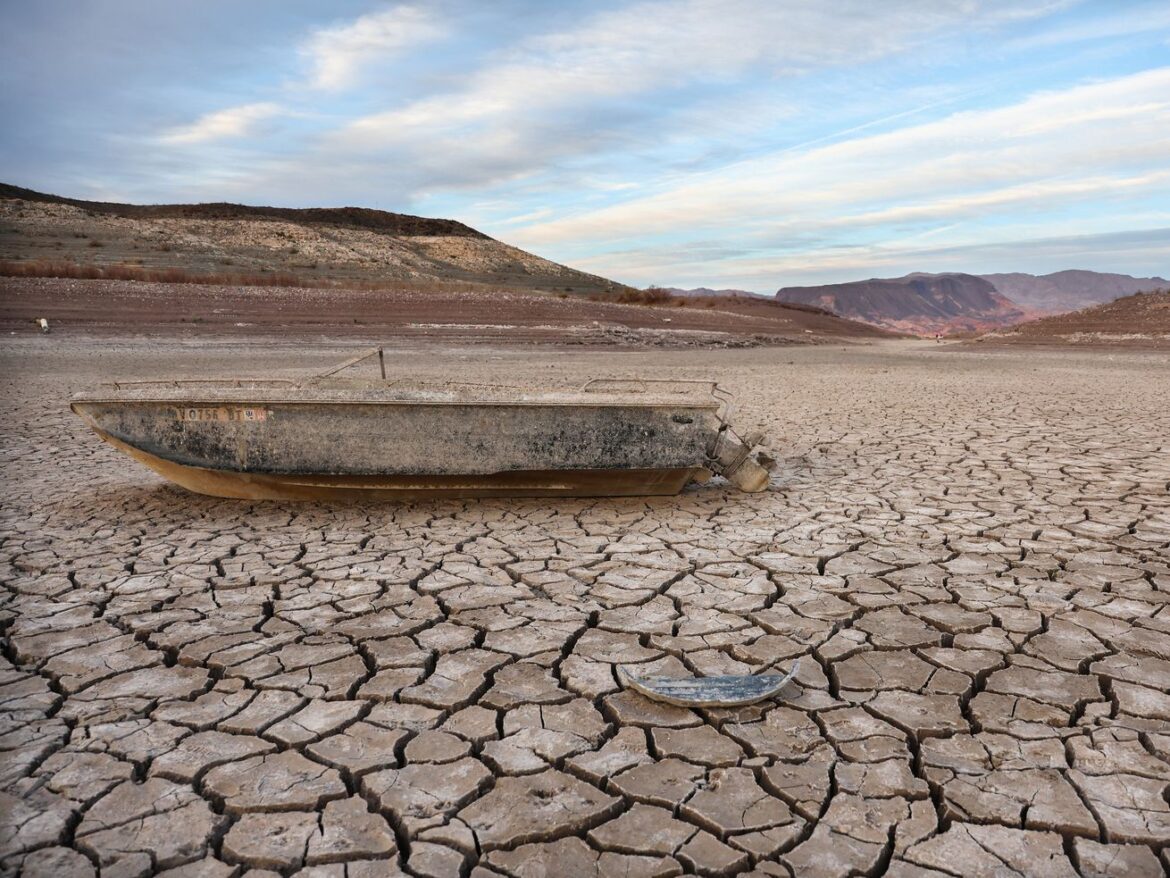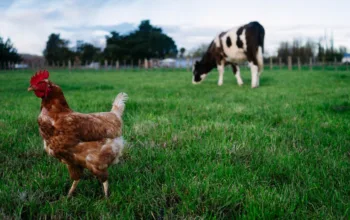The Colorado River is drying up. California, Arizona, and Nevada have finally agreed on a plan to help save it.
Last summer, the Colorado River system was headed toward collapse. Its reservoirs were at historic lows and sinking dangerously close to “dead pool,” at which point water can no longer pass downstream through the dams.
The situation ignited a tense debate among Western states over who would turn down their taps. Would it be farmers? Or cities? Which ones? Something — or someone — would have to give to save the river, on which some 40 million people depend.
Now, those states have finally struck a deal.
Over the weekend, California, Arizona, and Nevada agreed to conserve at least 3 million acre-feet of water from the river over the next few years, or an average of about 1 million acre-feet per year. (An acre-foot fills one acre of land with one foot of water and is what two to three households use each year.)
/cdn.vox-cdn.com/uploads/chorus_asset/file/24676811/GettyImages_1396526806.jpg)
Mario Tama/Getty Images
The terms of the agreement, which are not yet clear, make it unlikely that the Bureau of Reclamation — the federal agency that oversees water management in the US — will force states to make cuts, as some water officials had once feared. And to sweeten the deal, the federal government appears willing to pay water users a total of roughly $1.2 billion in exchange for much of those cutbacks.
These cuts are enormous, and they will certainly help safeguard the river and all that it sustains. Yet they’re only about half of what federal regulators had originally called for. An unusually wet winter in the West brought relief to the river’s ailing reservoirs, allowing states to get away with a much less ambitious offer.
Ultimately, however, this deal is not nearly enough to save the river, experts say. Steeper cuts are likely on the horizon.
Why states are in this position in the first place
The Colorado River is an iconic feature of the American West that most of us depend on in one way or another. It not only provides water and electricity to Western states but irrigates several million acres of farmland — which, among other things, supplies as much as 90 percent of the country’s winter veggies.
But in recent decades, the river has been vanishing, largely for two reasons.
The first has to do with mismanagement. In 1922, a landmark agreement called the Colorado River Compact divided the river among two groups of states (the upper basin and the lower basin). In determining the share each basin would get, water officials massively overestimated the river’s average flow.
Western water users each got a piece of the river, but — together with water later allocated to Mexico through a treaty — those pieces turned out to be more than what it could offer in a typical year. (The 1922 decision also failed to spell out what shares would be given to the 30 tribes across the basin.)
The second reason is all about climate. Decades of recent warming have been drying out the West, causing less water to flow into the river. Scientists estimate that every degree Fahrenheit of warming reduces the river’s flow by about 4 percent. That’s concerning because they expect temperatures in the basin to rise as much as 5 degrees by the middle of this century, relative to the 1900s.
/cdn.vox-cdn.com/uploads/chorus_asset/file/24676831/GettyImages_1486098182.jpg)
Marli Miller/UCG/Universal Images Group via Getty Images
Together, these problems have drained the river’s two main reservoirs — Lake Powell and Lake Mead — which scientists use to assess the health of the river. Even with the recent winter deluge, Lake Mead, the nation’s largest reservoir by capacity, is just 30 percent full. (The lake hasn’t been near full capacity for a few decades.)
That, in short, is why the federal government has been pushing states that depend on Lake Mead to dramatically curb their water usage. Over the summer, Bureau of Reclamation Commissioner Camille Calimlim Touton said basin states would need to conserve 2 million to 4 million acre-feet per year, on top of any cuts they’ve previously agreed to (there are a lot of those, too) to protect the Colorado River.
This new proposal is an answer to that call from Commissioner Touton.
Here are the basics of the deal, though the details are still murky
Under the new deal — which is still just a proposal — California, Arizona, and Nevada would cut their water usage by about 14 percent, or 3 million acre-feet, through the end of 2026. The Southwestern states also agreed that they’d conserve half of that by the end of 2024, providing more immediate relief.
California, which uses the largest share of the river, largely for agriculture, has said it will conserve a big chunk of that total: about 1.6 million acre-feet through 2026. Arizona, meanwhile, where big cities rely on the river, will cut a little over a million acre-feet, according to the Washington Post. Nevada will shoulder the smallest portion of cuts (which is not surprising, as it uses relatively little water from the river).
/cdn.vox-cdn.com/uploads/chorus_asset/file/24676845/GettyImages_1253770457.jpg)
Rebecca Noble/Bloomberg via Getty Images
These water cuts would be voluntary. And this is key: A previous proposal suggested that the US government might unilaterally cut water allocated to farms in Southern California and other users that have very senior entitlements to that water, by law. (I go into that in detail here.) Relying only on voluntary cuts keeps those users happy and avoids potential legal battles over the authority of the federal government.
What remains unknown is how exactly these cuts will shake out and when; who will be compensated; and what that means for people in the West and throughout the US. “There’s no clear indication of where the water is coming from,” said Michael Cohen, a senior researcher at the Pacific Institute, a nonprofit water policy organization.
The Metropolitan Water District of Southern California, which supplies water to Los Angeles and San Diego, will likely conserve a lot of water this year, Cohen said, because there was so much rainfall and snow in the state. That will ease the burden of the cuts, he said.
Big farm districts in California will also slash their usage. The Imperial Valley, which grows most of the nation’s greens from November through March, has offered to reduce water usage by 250,000 acre-feet per year, in exchange for federal funding, on top of any existing conservation. The district already runs a large program that pays farmers to conserve water voluntarily. (Compensated or not, the anticipated reduction could affect the US supply of vegetables and the region’s economy, as I previously reported.)
Other farm regions, including Coachella Valley and Palo Verde Irrigation District, have also made plans to cut their usage.
It’s harder to say what will happen in Arizona, Cohen said, where both farms and cities rely on the river. Like California, the state had a wet winter, which will help limit the impact of cuts. Yet Phoenix, Tucson, and other metropolitan users may face steep reductions because much of the state’s farmland — namely, vegetable fields in Yuma — has higher priority to the river’s water.
An imperfect, temporary deal
The Bureau of Reclamation is now reviewing the proposal to understand how it will impact the Colorado River. Later this year, the agency will announce how it plans to manage the river, building on this proposal (and public comment). The top-line commitments are unlikely to change.
But it’s important to remember that this deal is only temporary — it would expire at the end of 2026. At that point, the bureau will replace it with a whole new set of guidelines that states will again need to negotiate, and they may contain additional cuts.
They should contain additional cuts, Cohen said. A total of 3 million acre-feet is “definitely not enough” to protect the river over the long term, he said.
Other scholars agree. Utah State University Professor Jack Schmidt, an authority on the Colorado River water issues, told the Los Angeles Times this week that the river basin will need to cut four times as much water each year than what they just agreed to in order for the reservoirs to recover. “A big, heavy lift still lies ahead,” he said.
/cdn.vox-cdn.com/uploads/chorus_asset/file/24676854/GettyImages_1247517616.jpg)
David McNew/Getty Images
It’s easy to see the winter rain and snow as a much-needed reprieve — and it is — but it means little for the future health of the river, Cohen said. “We don’t know what the snowpack is going to be next year,” Cohen said. “We got extraordinarily lucky this year in both California and the Rockies. To suggest that this is going to save us is far from the truth.”



